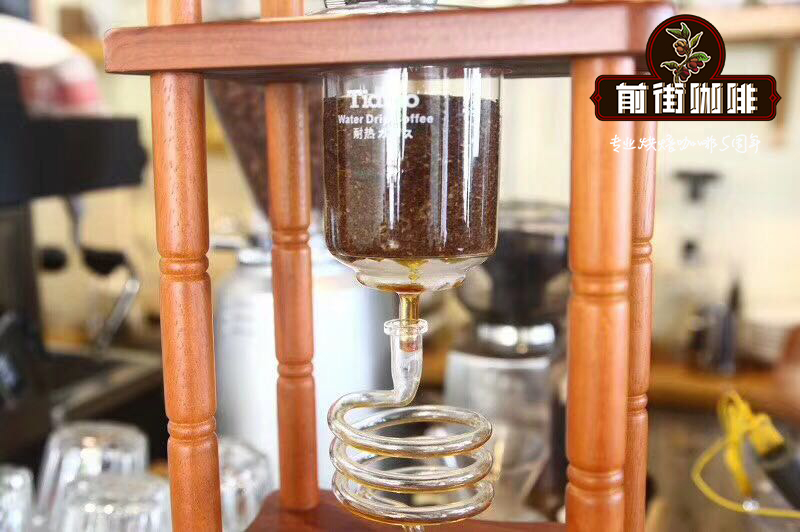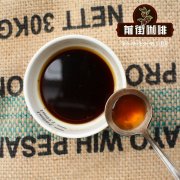Characteristic Story of Coffee beans in Guoding Village, Yechuefi, Ethiopia Alim Bukato processing Plant

Professional coffee knowledge exchange more coffee bean information please follow the coffee workshop (Wechat official account cafe_style)
It is located in what can be said to be the quintessential region of the generalized Yega Chefen region, that is, the Gedeb region (if it is classified according to the producing area of ECX, it belongs to Cochele Kochere). Gedeb is located in the southeast corner of Yega Chefen, about 50 kilometers south from the town of Ye Jia Xue Fen, and 2030 meters above sea level from 1850 m up to the processing plant, which can be said to be the highest area of Ye Jia Xue Fen.
Coffee makers tend to call the area Gedeb, mainly because the largest town center in the area is named after Gedeb. Here, it can be said that we have reached the most far-reaching zone, arriving in Worka, where the Waka Cooperative, which is a collection of thousands of spoils, is here.
Whether it is the privately owned processing plant Alim Bukato or the Goudingding Cooperative, it is only a few hundred meters away from the border of Yega Chefen. More than ten years after Yega Xuefei became famous, it seems more and more difficult to find the flavor of Yega Xuefei fruit Tintin for the first time, perhaps because the soil power is not freewheeling, or it is the burden of fame. The eyes of bean hunters around the world gradually shifted from Yega Snow to Kochere, then to Gedeb and Worka, all pointing to the remote south / southeast corner.
Yega Sheffield Tintin-Alim Bukato, for tanning and washing duet batches.
In the traditional sun treatment process, after the farmers send the coffee berries to the processing plant, they will spread the African-style scaffolding directly for 2-3 weeks, during which the unripe berries will be manually removed and rely on experienced workers to stir them regularly. After the completion of the sun, the pulp and pods (sheep skin) are removed and stored in the warehouse until the moisture content is reduced to 11-12%.
In the washing process, after the peel / pulp of the berry is removed by the planer, it is placed in the fermentation tank for 1-3 days until the pectin layer decomposes (depending on the local temperature and humidity), and then the shelled beans will be washed through the washing channel for 30-60 minutes. At this time, the beans with low specific gravity and poor quality can be removed through the channel design combined with water flow. After drying in African scaffolding for about 14 days, the dried beans will be stored in the warehouse of the treatment plant, and then transported to Dry Mill (dry treatment plant) to be shelled before export, and finally bagged and exported through a series of complicated screening processes such as foreign body removal, silver peeling and polishing, gravity screening, color selection and so on.
Coming from the Yega Sheffield Tintin / Waka micro-production area always arouses our curiosity and attention, and the quality has never let us down. In addition to the advantages of high altitude and environment, after a personal visit, I found that they were also very careful in handling the work method. The proportion of sun berries and unripe beans on a bed scaffolding was much lower than that of most treatment plants. The selection of breathable net cloth on the scaffolding and the thickness of exposure berries are also quite fastidious. These seemingly ordinary small details can greatly affect the quality and the flavor in the cup.
The inherent advantages of the production area coupled with fine processing methods have created this micro-production area and the distinction of the carefully selected processing plant.
Important Notice :
前街咖啡 FrontStreet Coffee has moved to new addredd:
FrontStreet Coffee Address: 315,Donghua East Road,GuangZhou
Tel:020 38364473
- Prev

Introduction to the flavor and taste of Ethiopian coffee: what is the best coffee in Ethiopia?
Professional coffee knowledge exchange more coffee bean information please follow the coffee workshop (Wechat official account cafe_style) Ethiopia is the kingdom of coffee, here is coffee paradise, there are thousands of coffee varieties, countless varieties of coffee are named, and those who have a general understanding of coffee history all know that Ethiopia is not only the birthplace of coffee, but also the saint in the eyes of bean hunters.
- Next

Vicki Nanguo Black Angel Manor in Guatemala-enzyme slow drying treatment of Kaduai SHB
For more information about coffee beans, please follow the coffee workshop (official Wechat account cafe_style) Black Angel Manor is located in northern Guatemala, Democracy Municipality Vivette Nanguo Plateau, the northern end of Huehuetenango Highland near Mexico. Founded in January 1965, Mr. Jorge, the landowner, respects the gift of land and devotes himself to the natural agricultural law.
Related
- Detailed explanation of Jadeite planting Land in Panamanian Jadeite Manor introduction to the grading system of Jadeite competitive bidding, Red bid, Green bid and Rose Summer
- Story of Coffee planting in Brenka region of Costa Rica Stonehenge Manor anaerobic heavy honey treatment of flavor mouth
- What's on the barrel of Blue Mountain Coffee beans?
- Can American coffee also pull flowers? How to use hot American style to pull out a good-looking pattern?
- Can you make a cold extract with coffee beans? What is the right proportion for cold-extracted coffee formula?
- Indonesian PWN Gold Mandrine Coffee Origin Features Flavor How to Chong? Mandolin coffee is American.
- A brief introduction to the flavor characteristics of Brazilian yellow bourbon coffee beans
- What is the effect of different water quality on the flavor of cold-extracted coffee? What kind of water is best for brewing coffee?
- Why do you think of Rose Summer whenever you mention Panamanian coffee?
- Introduction to the characteristics of authentic blue mountain coffee bean producing areas? What is the CIB Coffee Authority in Jamaica?

